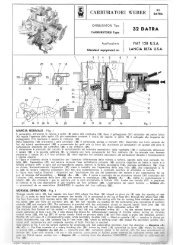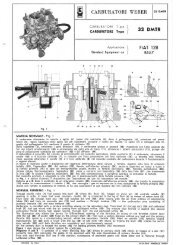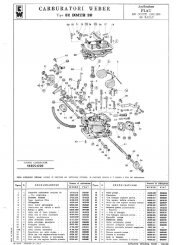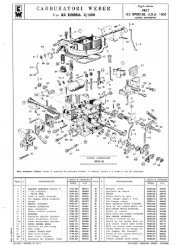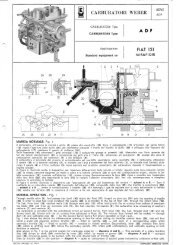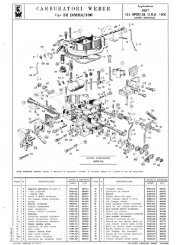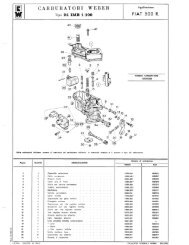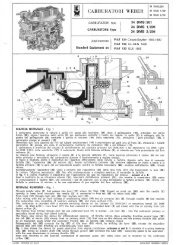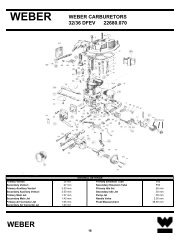Engine Maintenance and Modification Bradley Artigue
FIAT 124 Spider Engine Maintenance + Modification - Artigue.com
FIAT 124 Spider Engine Maintenance + Modification - Artigue.com
- No tags were found...
Create successful ePaper yourself
Turn your PDF publications into a flip-book with our unique Google optimized e-Paper software.
FIAT 124 Spider<br />
<strong>Engine</strong> <strong>Maintenance</strong> + <strong>Modification</strong><br />
when the spark is delivered <strong>and</strong> the fuel/air mixture <strong>and</strong> cylinder pressures are optimal.<br />
If the spark occurs at top dead center then the piston is already moving down when<br />
these optimal conditions are possible. Therefore the spark is forced to occur just prior to<br />
top dead center; the fuel/air ignition begins <strong>and</strong> reaches its maximum at the appropriate<br />
time.<br />
A variation in ignition advance is required to maintain optimal efficiency. Beyond the<br />
“hard” setting of 0 or 10 degrees BTDC the ignition distributor has a metal plate that<br />
moves according to engine speed. This movement, governed by either centrifugal or a<br />
combination of centrifugal <strong>and</strong> pneumatic force, varies the advance so that the spark is<br />
delivered at the optimal point, up to 32 degrees BTDC (depending on series, some were<br />
limited to 28 degrees).<br />
Spiders manufactured prior to 1978 have centrifugal advance plates, the movement of<br />
which is driven by the spinning of the distributor shaft. As the shaft increases in speed<br />
the centrifugal force moves the advance plates outward, increasing the advance.<br />
On Spiders manufactured after 1978 (the CS2, CS0, <strong>and</strong> all Pininfarina Spiders) the<br />
vehicles were fitted with a Marelli electronic ignition with a pneumatically-operated<br />
advance mechanism. It has often been misidentified as a pollution control – it certainly is<br />
not. The diaphragm in the distributor varies the amount of advance when it is pulled by<br />
the drop in air pressure that occurs when the throttle opens. As the throttle opens <strong>and</strong><br />
more air enters the engine the amount of advance increases. This design makes the<br />
ignition advance dependent on the actual load of the engine rather than the speed of the<br />
engine; arguably a more efficient design.<br />
9.4 Firing Order <strong>and</strong> Initial Timing<br />
All FIAT Spiders fire in the order 1-3-4-2. The initial timing is set so that the camshafts<br />
<strong>and</strong> crankshaft are in the initial position, with camshafts aligned with pointer holes <strong>and</strong><br />
crankshaft aligned to the block mounted pointer. When this initial position is met the<br />
engine is set to fire on the #4 cylinder (figure 43).<br />
Crankshaft Camshaft Distributor Rotor Position<br />
PULLEY TIMING MARK IS<br />
AT 0° BTDC<br />
Figure 42: Initial Ignition Setting<br />
69



